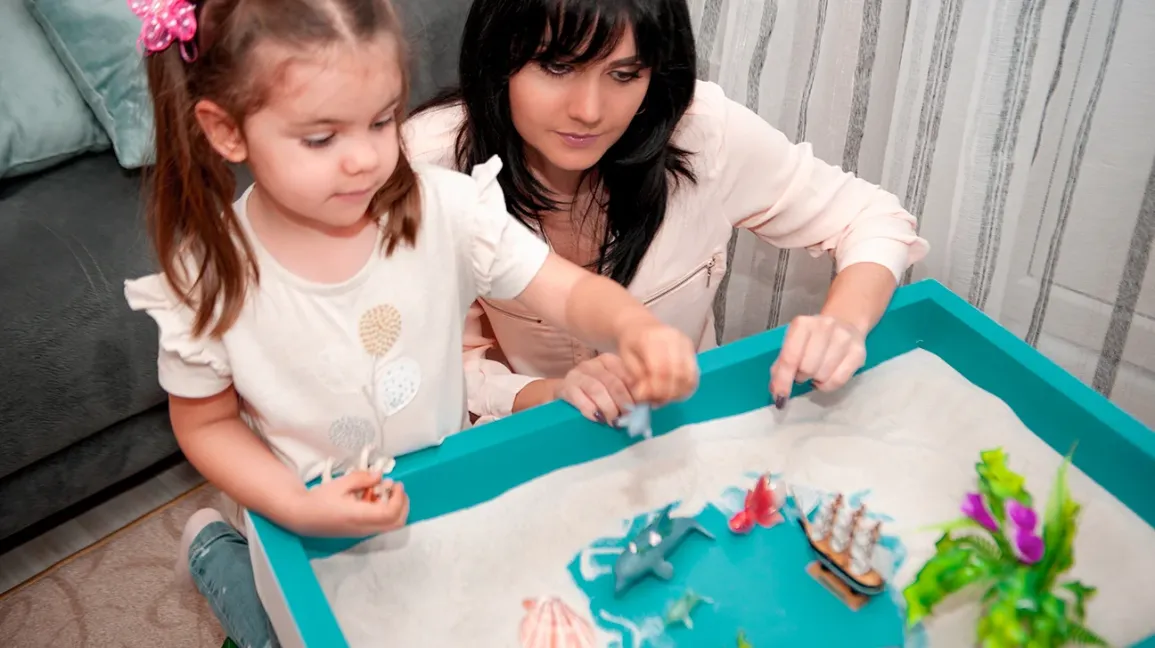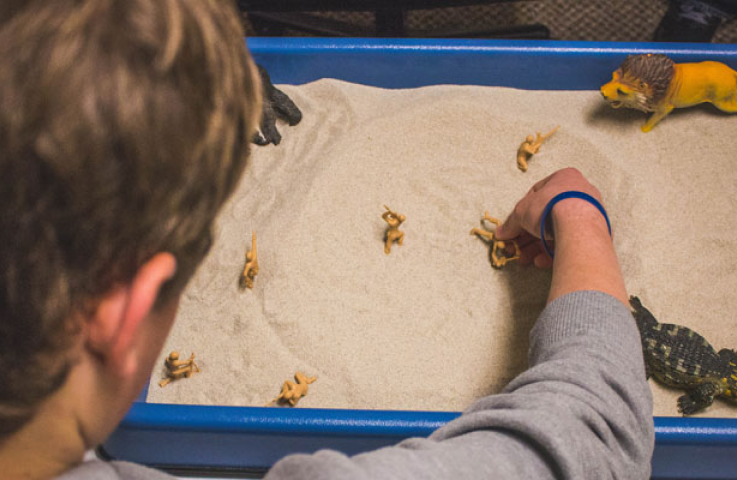Sand Tray Therapy is a form of expressive therapy. This non-verbal method of therapy is often used with children, but can be applied to adults, teens, couples, families, and groups as well. Sand tray therapy allows a client to construct their own microcosm using miniature toys and colored sand. The newly created microcosm then acts as a reflection of the client’s own life and allows them the opportunity to resolve conflicts, remove obstacles, and to connect to their inner being and recognize the beauty of their own soul as they begin to accept themselves.


Many children are unable to vocalize their emotional state as a result of trauma or extreme neglect or abuse. Incorporating the element of a familiar medium, the sand, allows a child to instantly achieve a sense of comfort and security. With little instruction from the therapist, the child is free to play and develop his or her own expression of situations. Oftentimes the children will experience a sense of independent play and will begin making assumptions and behavior changes without cues from the therapist. This method therapy serves as a valuable and powerful outlet for children and an incredibly insightful method of gaining access to their traumatic experiences.
Sand tray therapy is very useful in the treatment of children who have been sexually abused. These children will often remain silent for fear of harm or even death. They are often threatened and are in highly anxious states when they come to therapy. This relaxed and interactive setting of sand tray therapy provides them the initial arena of safety that they need to move toward healing.
Adults who have been traumatized, or who cannot express their emotional state verbally or through other cognitive means of therapy, respond well to sand tray therapy. The environment presents an atmosphere free from threats, violence, and retribution and the clients are capable of acting out any scenarios that present themselves. The therapist works with the client to alter the positions of the miniature objects as representations of the true people and events. By beginning to facilitate change on a fictitious level, a client gains the courage and ability to recognize that these same changes can be made in their own life.
